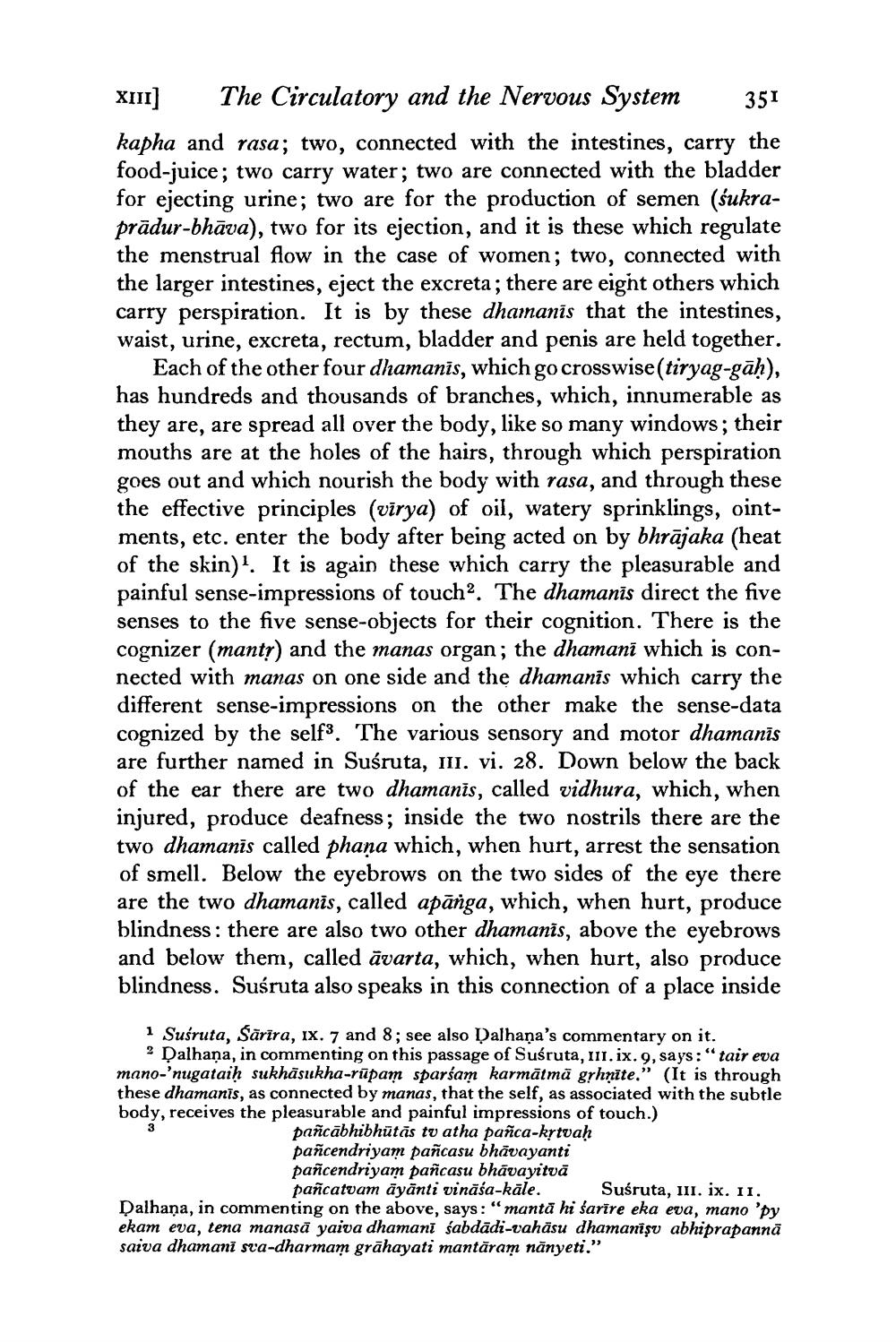________________
XIII]
The Circulatory and the Nervous System
351
kapha and rasa; two, connected with the intestines, carry the food-juice; two carry water; two are connected with the bladder for ejecting urine; two are for the production of semen (śukraprādur-bhāva), two for its ejection, and it is these which regulate the menstrual flow in the case of women; two, connected with the larger intestines, eject the excreta; there are eight others which carry perspiration. It is by these dhamanis that the intestines, waist, urine, excreta, rectum, bladder and penis are held together.
Each of the other four dhamanis, which go crosswise (tiryag-gah), has hundreds and thousands of branches, which, innumerable as they are, are spread all over the body, like so many windows; their mouths are at the holes of the hairs, through which perspiration goes out and which nourish the body with rasa, and through these the effective principles (virya) of oil, watery sprinklings, ointments, etc. enter the body after being acted on by bhrājaka (heat of the skin). It is again these which carry the pleasurable and painful sense-impressions of touch2. The dhamanis direct the five senses to the five sense-objects for their cognition. There is the cognizer (manty) and the manas organ; the dhamani which is connected with manas on one side and the dhamanis which carry the different sense-impressions on the other make the sense-data cognized by the self3. The various sensory and motor dhamanis are further named in Suśruta, III. vi. 28. Down below the back of the ear there are two dhamanis, called vidhura, which, when injured, produce deafness; inside the two nostrils there are the two dhamanis called phana which, when hurt, arrest the sensation of smell. Below the eyebrows on the two sides of the eye there are the two dhamanis, called apānga, which, when hurt, produce blindness: there are also two other dhamanis, above the eyebrows and below them, called avarta, which, when hurt, also produce blindness. Suśruta also speaks in this connection of a place inside
1 Suśruta, Sarira, Ix. 7 and 8; see also Dalhana's commentary on it.
2 Dalhana, in commenting on this passage of Suśruta, III. ix. 9, says: "tair eva mano-'nugataiḥ sukhāsukha-rūpam sparsam karmātmā grhnite." (It is through these dhamanis, as connected by manas, that the self, as associated with the subtle body, receives the pleasurable and painful impressions of touch.)
pañcābhibhūtās to atha pañca-kṛtvaḥ pañcendriyam pañcasu bhavayanti pañcendriyam pañcasu bhavayitvā pañcatvam ayanti vināśa-kāle.
Suśruta, III. ix. II.
Dalhana, in commenting on the above, says: "mantā hi sarire eka eva, mano 'py ekam eva, tena manasa yaiva dhamani sabdadi-vahäsu dhamanişv abhiprapannā saiva dhamani sva-dharmam grahayati mantāram nānyeti."




